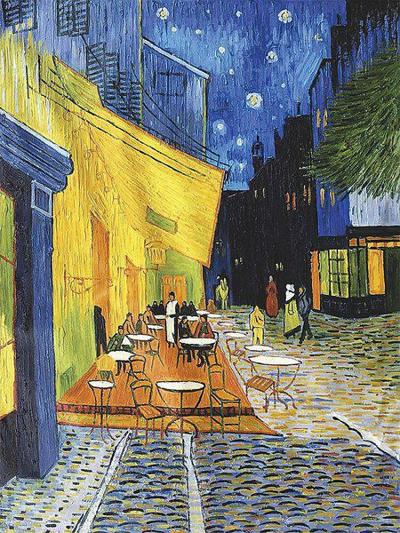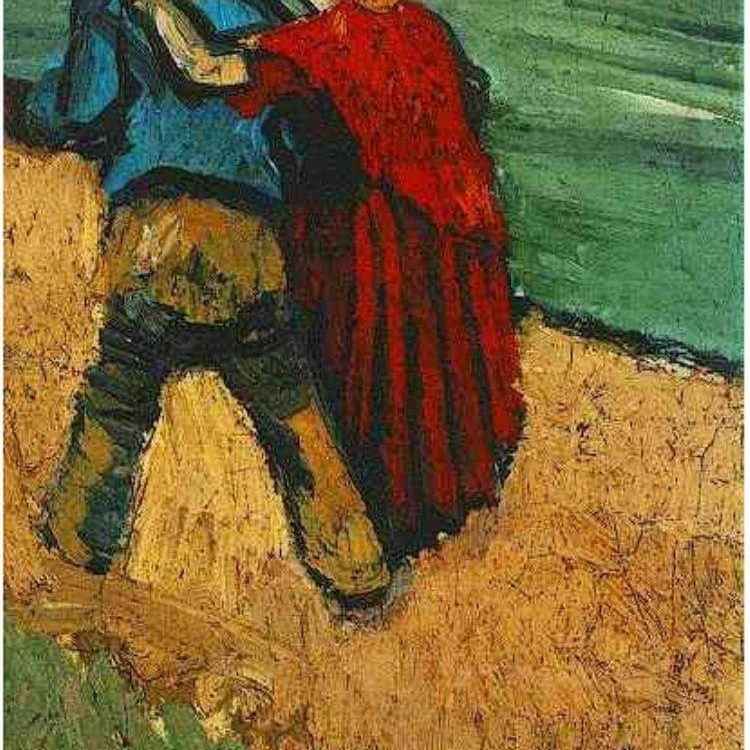22.07.2021 – 12:38
Nietzsche once said: “In love there is always a particle of madness, just as there is always a logical particle in madness.”
No doubt he was right, as we always encounter difficulties in identifying targets in many aspects of human life. Where does genius and madness end? Does love drive us crazy? Why were most of the great artists endowed with that strangeness, which often resulted in mental illness? Let us recall the schizophrenia of Edvard Munch, the author of “The Scream”, or the paranoid crises of the genius Dali, both prominent personalities who found in art the perfect expression for demons and the wonders of their privileged but at the same time suffering minds. Very few artists have really found happiness in their art, much less in the canvas of life journey. The example of Vincent Van Gogh is absolutely the most important. The modest painter, who never achieved fame in life, suffered from various diseases: epilepsy, Menier syndrome and manic-depressive psychosis. There was a life marked by pain and loneliness, where the only true love was that of his brother, Teos. A short and turbulent life, masterpieces that leave you breathless from the beauty and power of expression, such are the details of Van Gog’s myth. A man of mystical temperament, instantly exalted, both religiously and aesthetically. Like paintings, religion also appears at the heart of Van Gogh’s existence, an existence marked by empathy and compassion for the humble. From this point of view, Van Gogh’s painting easily acquires a social, witnessing and empathetic character.
Vincent Van Gogh was born in Zundert, the Netherlands, on March 30, 1853, and died in Auvers-sur-Oise on July 29, 1890. One of the most famous painters of all time, with nearly nine hundred paintings, more than a thousand drawings and sketches of innumerable which bore his signature. However, it was not the numbers that made him great, but his characteristic sensitivity. The iconic sunflower, the legendary cut ear, yet he was not recognized alive and was considered a loser. Can you imagine a world without “Sunflower”, or “Starry Night”?
Almost non-existent world.
Initially, Van Gogh was destined for the priesthood and worked as a lay preacher in the Borinage region of Belgium. When he was fired, he decided that his future would be related to painting. Van Gogh started painting only at the age of 27 and did not attend any teaching sessions. The genius had the ability to cast on the canvas the feelings he was experiencing, mixing colors with powerful brushes. His life was characterized by loneliness and pain, mental disorders and isolation, which consumed the possibility of a happy life. However, the picturesque power is also thanks to these hardships, which accompanied him throughout the thirty-seven years of his short life. “When I look at the stars, it always puts me in dreams […] can we not take death to go to a star? ”

The letters that Van Gogh wrote to Theos (collected in the book “Letters to Theon”) are a living proof of the painter’s incredible sensitivity. The relationship with his brother was perhaps the most authentic of his life. “This is how life goes, time does not return. But I am adamant in my work […]. Especially in my case, where a stronger crisis can destroy my ability to paint once and for all. “During the crisis, I feel cowardly with anxiety and suffering – more cowardly than it would make sense to feel.” The pain and anguish that engulfed the painter is evident in the letters: “I would like to write many things to you, but I feel useless.” As a result, feelings were recreated with the brush. The most famous painting is “Wheat Field with the Flight of Crows”, 1890, where the bright and vibrant yellow of wheat meets the gloomy sky filled with menacing black crows. Canvas that heralded the end of the artist, who painted with heart tears. Van Gogh’s sources of inspiration are varied, they include Dutch genre painting and realistic paintings by Millet or contemporaries, but he was also heavily influenced by Japanese wood carvings. He even made copies, preserving the very expressive and idiosyncratic style of engravings by Hiroshige, Kesai Eisen, etc./Konica.al
Although he worked only 10 years, from 27-37 years old, Van Gogh was extremely prolific, producing over 900 paintings and many drawings and sketches, which equate to a new work every 36 hours. In addition to creating hundreds of paintings, he wrote almost as many letters and postcards, which included the first sketches of some of the most famous masterpieces.
The genius had a close relationship with the painter Paul Gauguin. Even Van Gogh, Gauguin and Emile Bernard planned to form a close community of artists in the south of France, where they intended to live and paint together. At Van Gogh’s urging, the three artists exchanged self-portraits. When he painted the famous “Night with the Stars”, he did not think about it at all. In fact, he considered himself a loser, and many of the paintings as failures, so much so that rumors say he sold only one painting in his lifetime. If only we could go back in time and show him how famous he would be over 150 years later!

Van Gogh cut off the ear in 1888, but do you know why? The circumstances are not known exactly, but many experts believe that the event took place after a heated debate with colleague, painter Paul Gauguin at the Yellow House in Arles.
Van Gogh suffered from mental disorders, so much so that in April 1889, he volunteered to go to the Saint-Paul-de-Mausole Psychiatric Hospital in Saint-Remy, where he remained for a year. He painted some of the most famous paintings from the hospital window, including “Starry Night”. After leaving asylum, he settled in Auvers, a village near Paris, to be near his brother, Theos. However, his mental health continued to deteriorate, and on July 29, 1890, he committed suicide. He died two days later, addressing his brother with the words: “misery will never end.”/Konica.al




